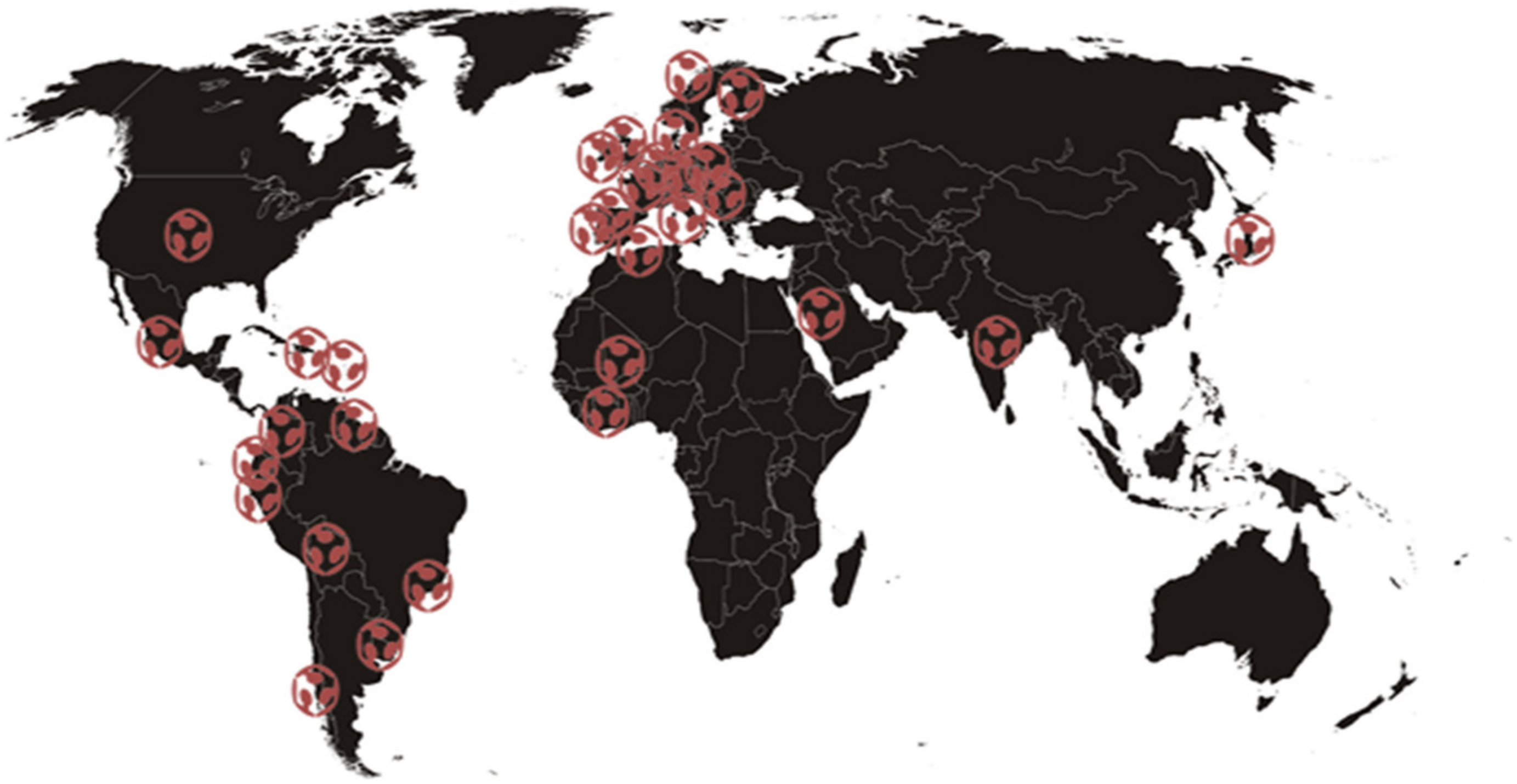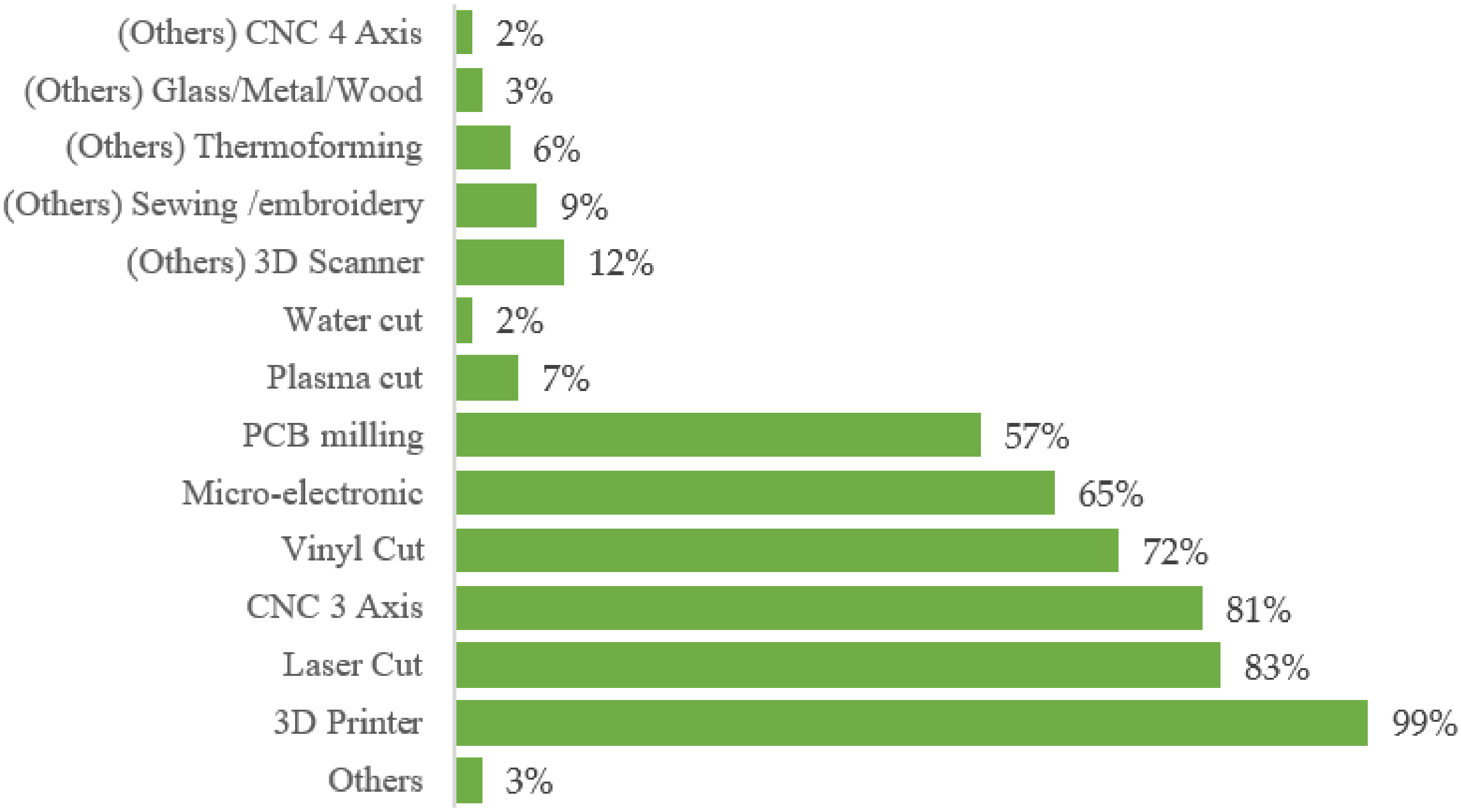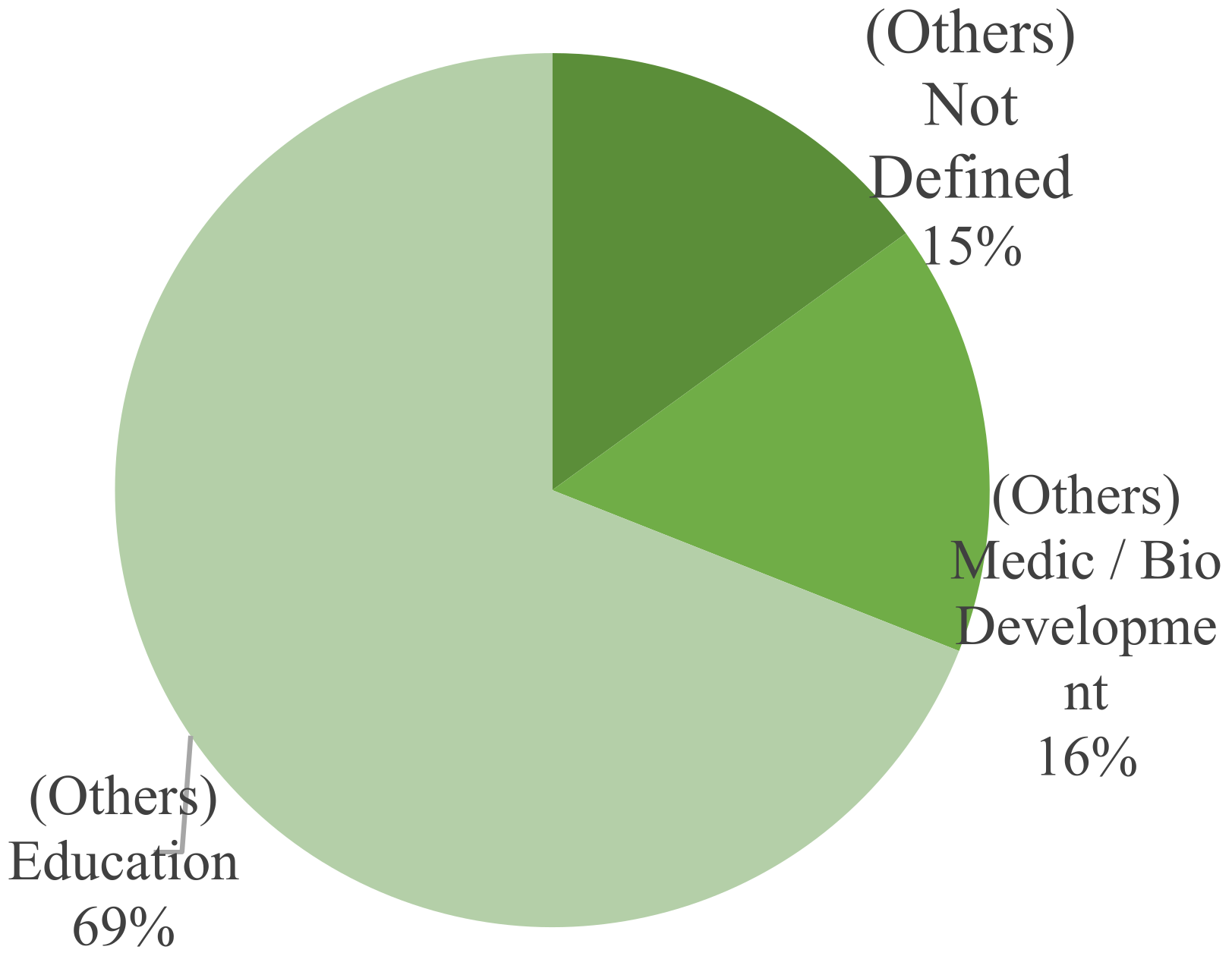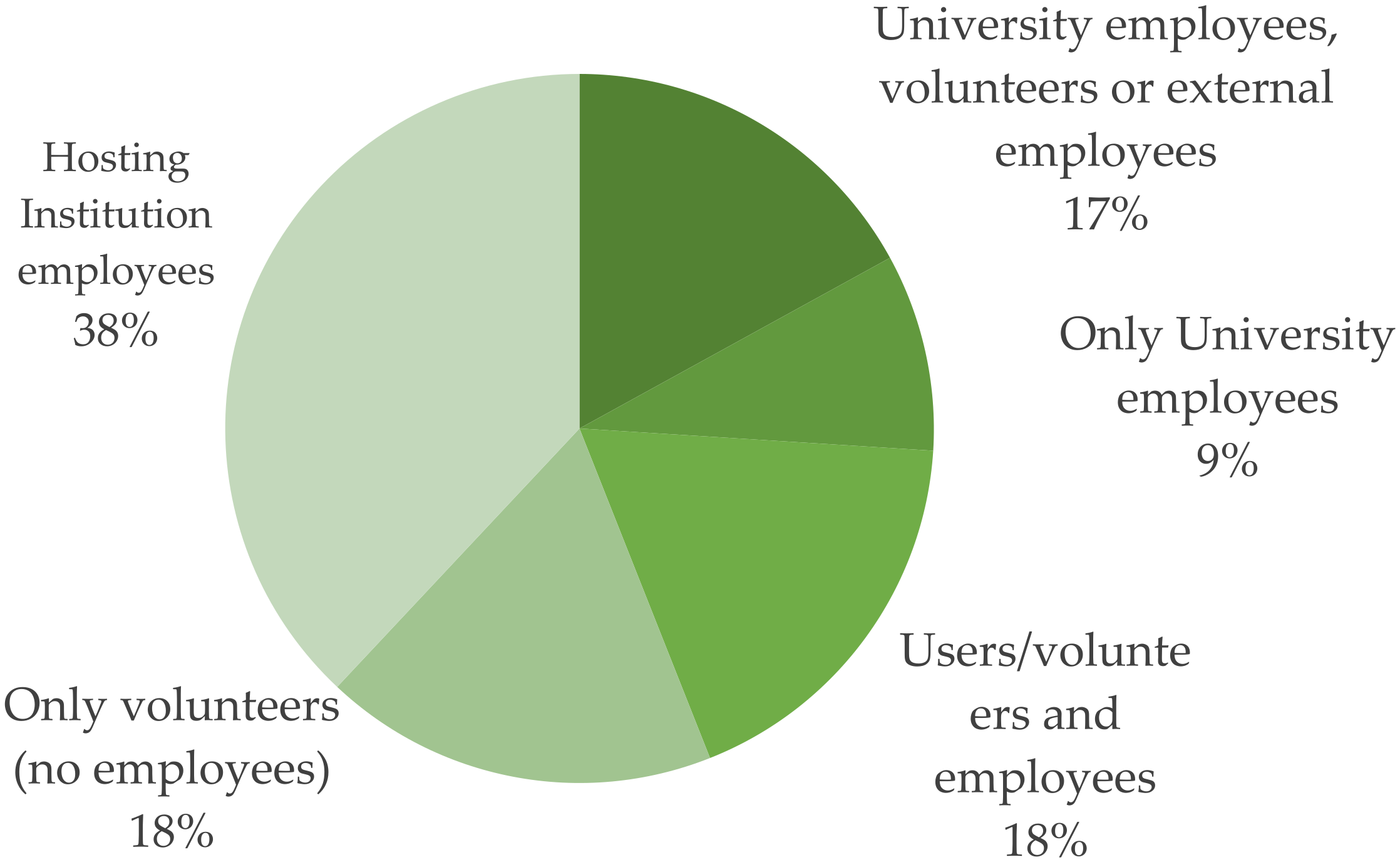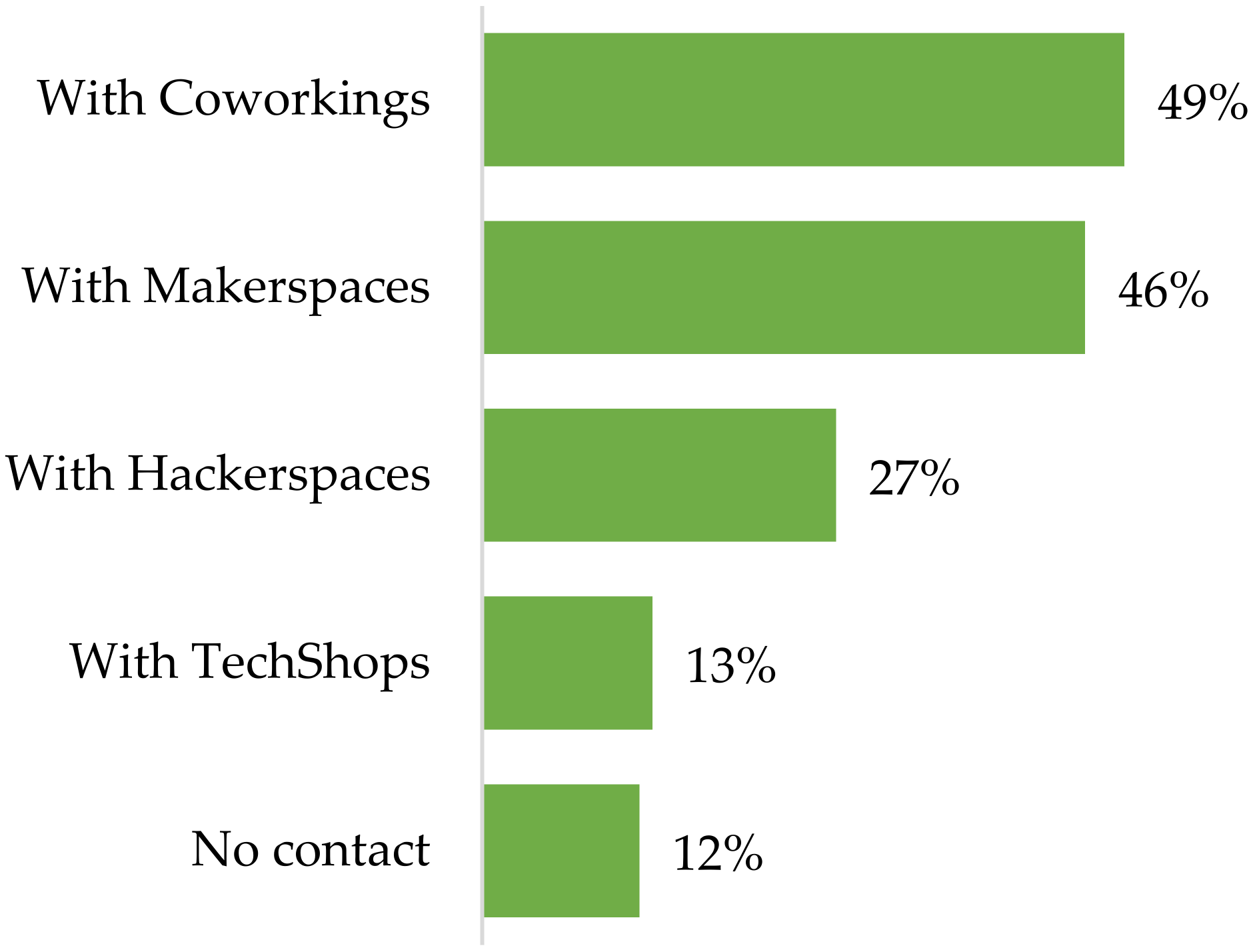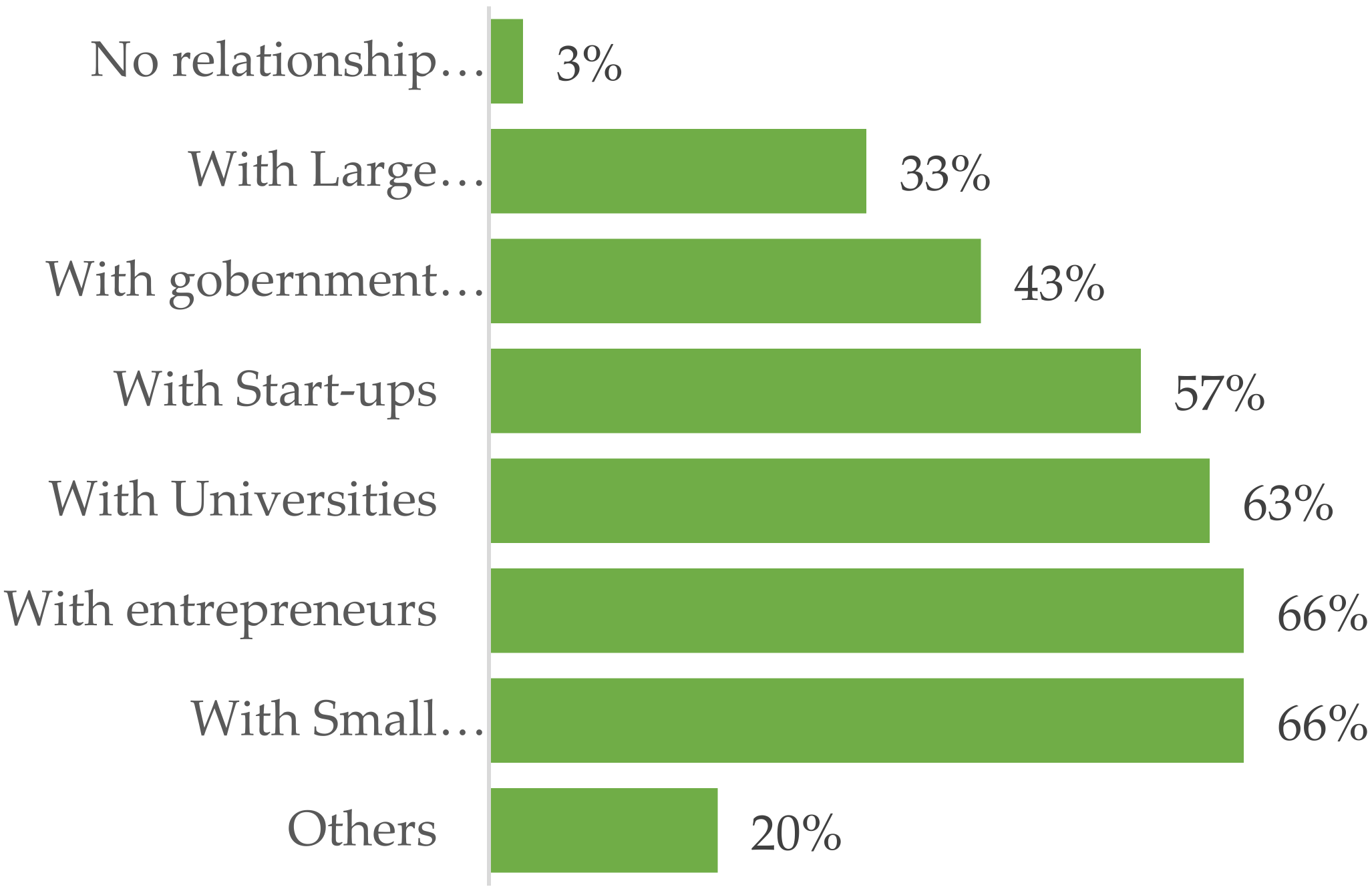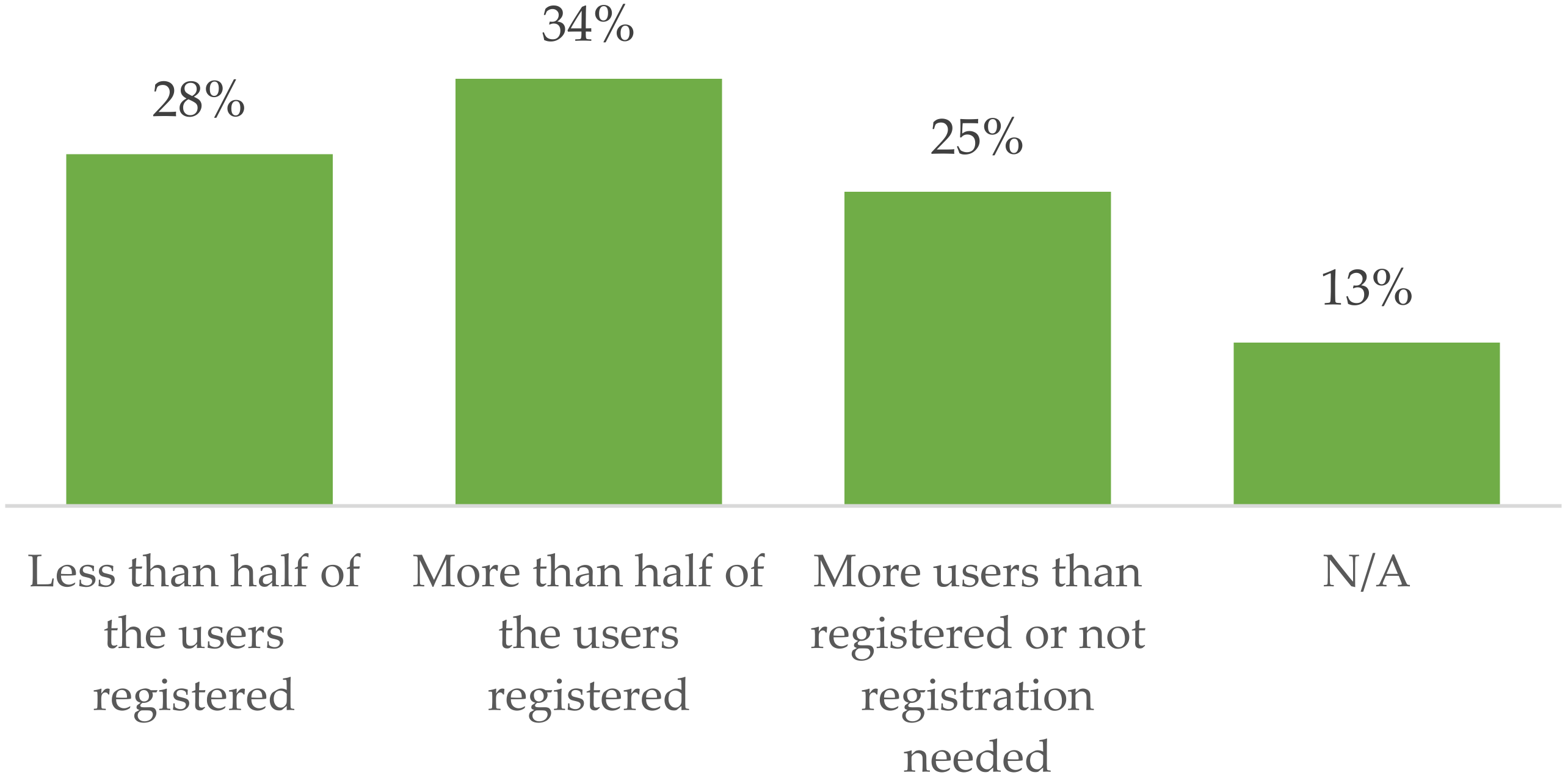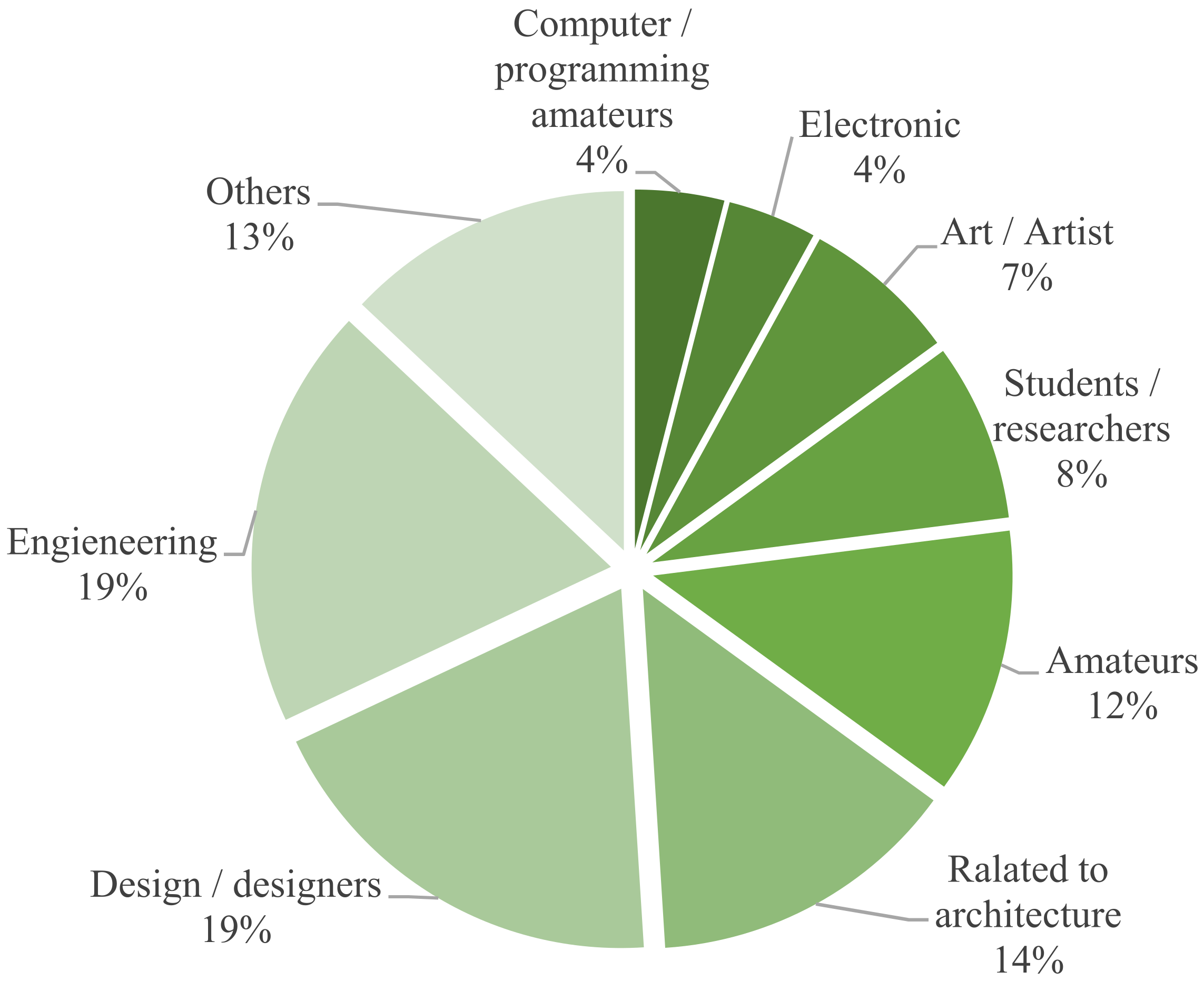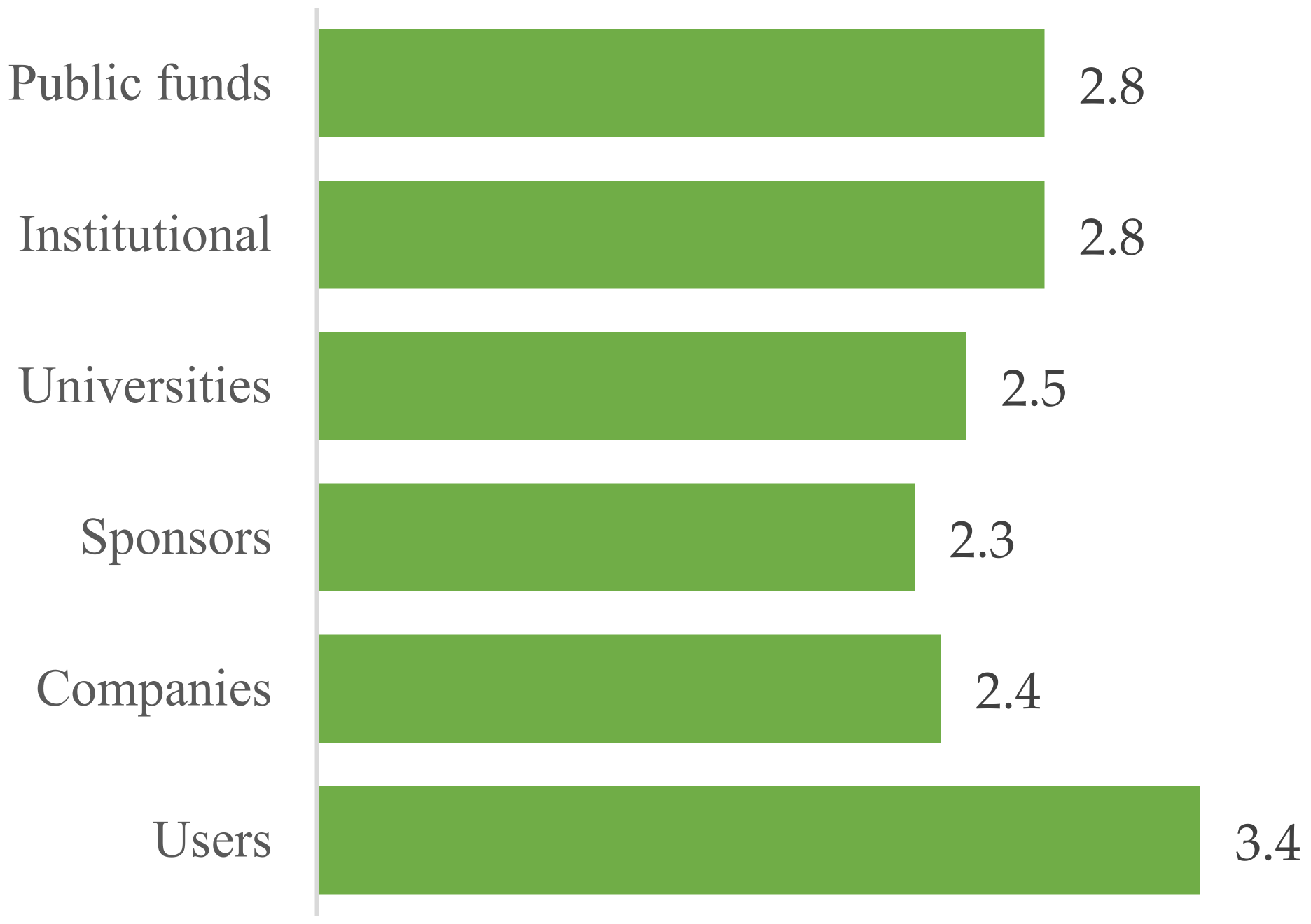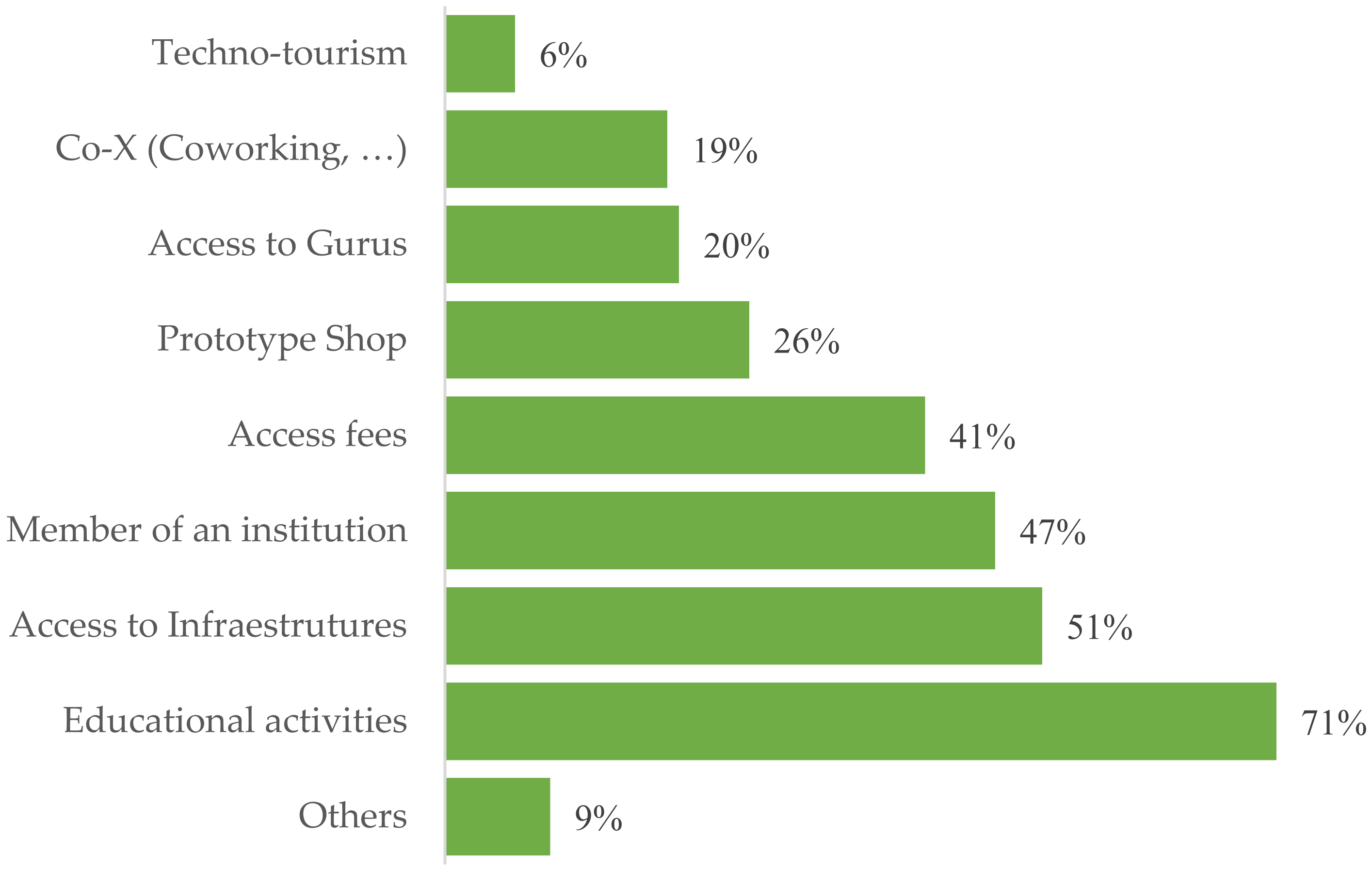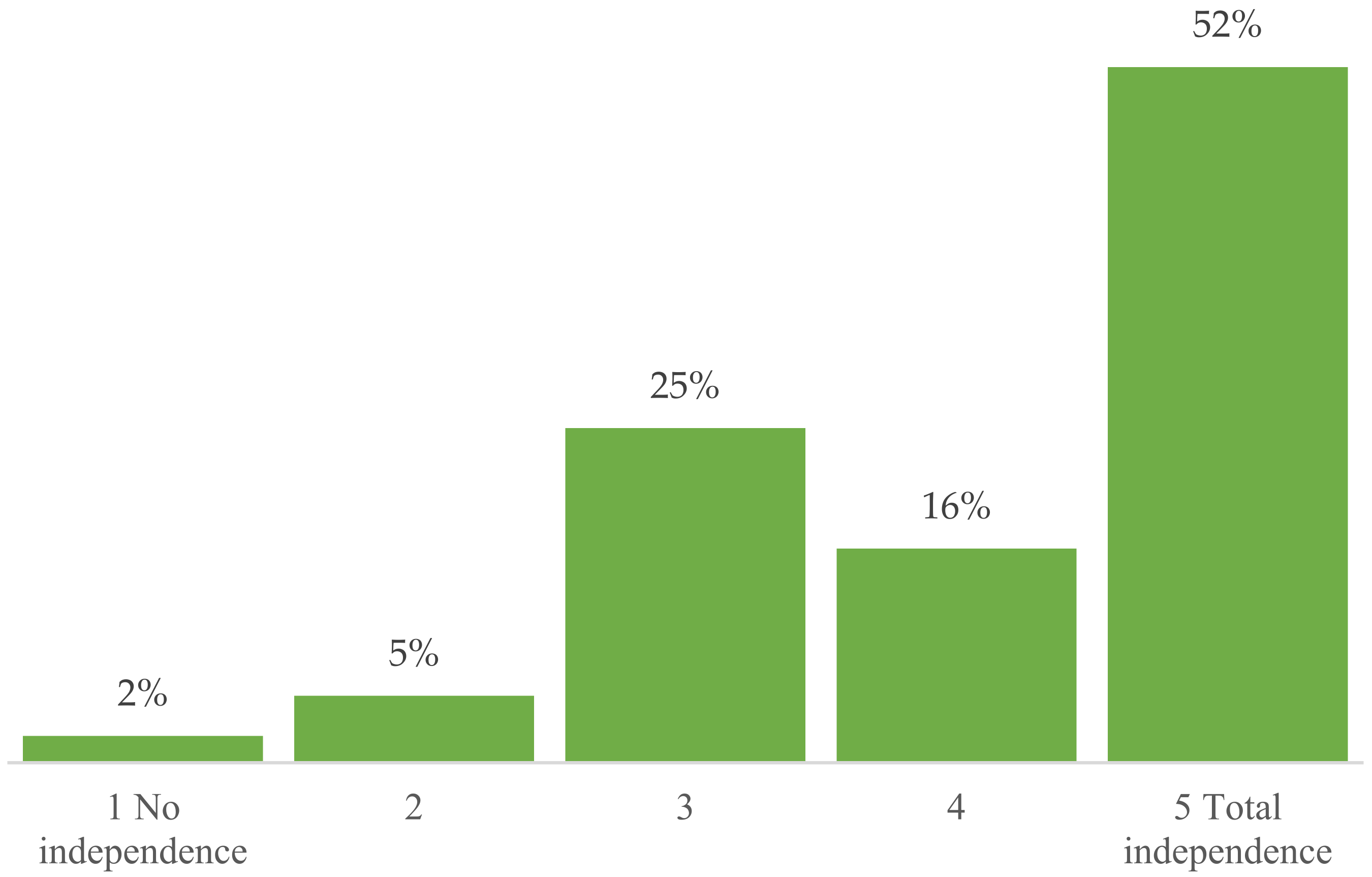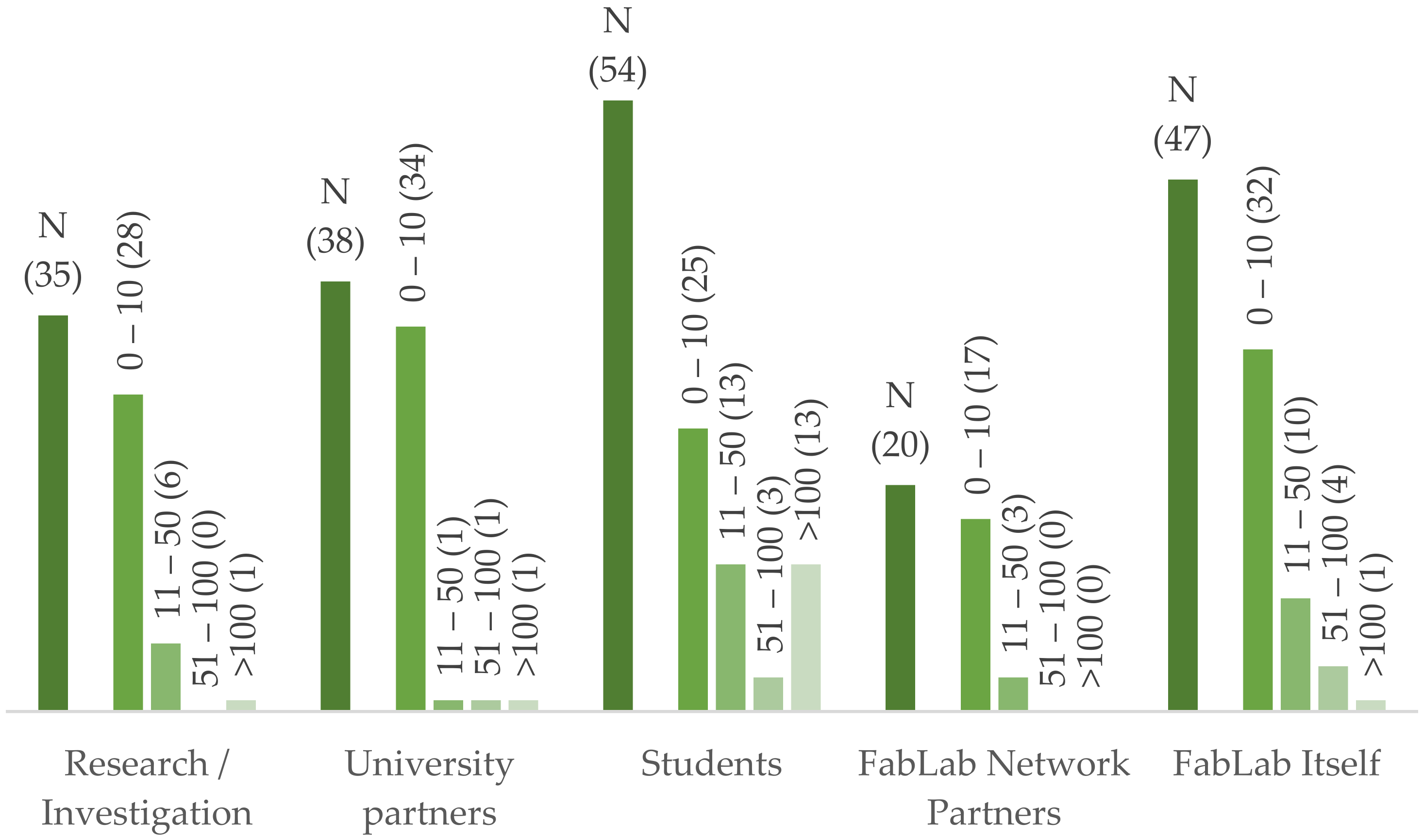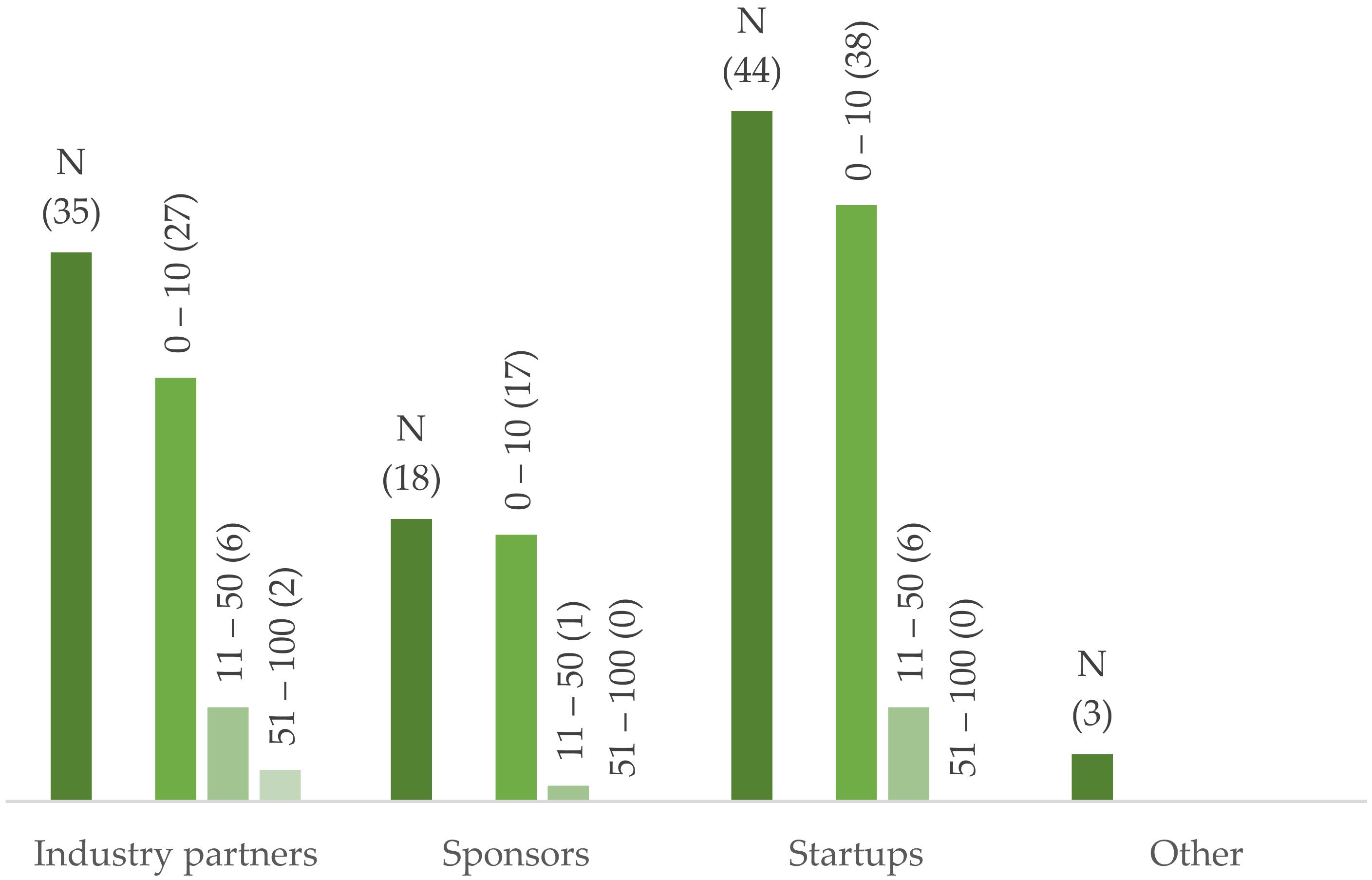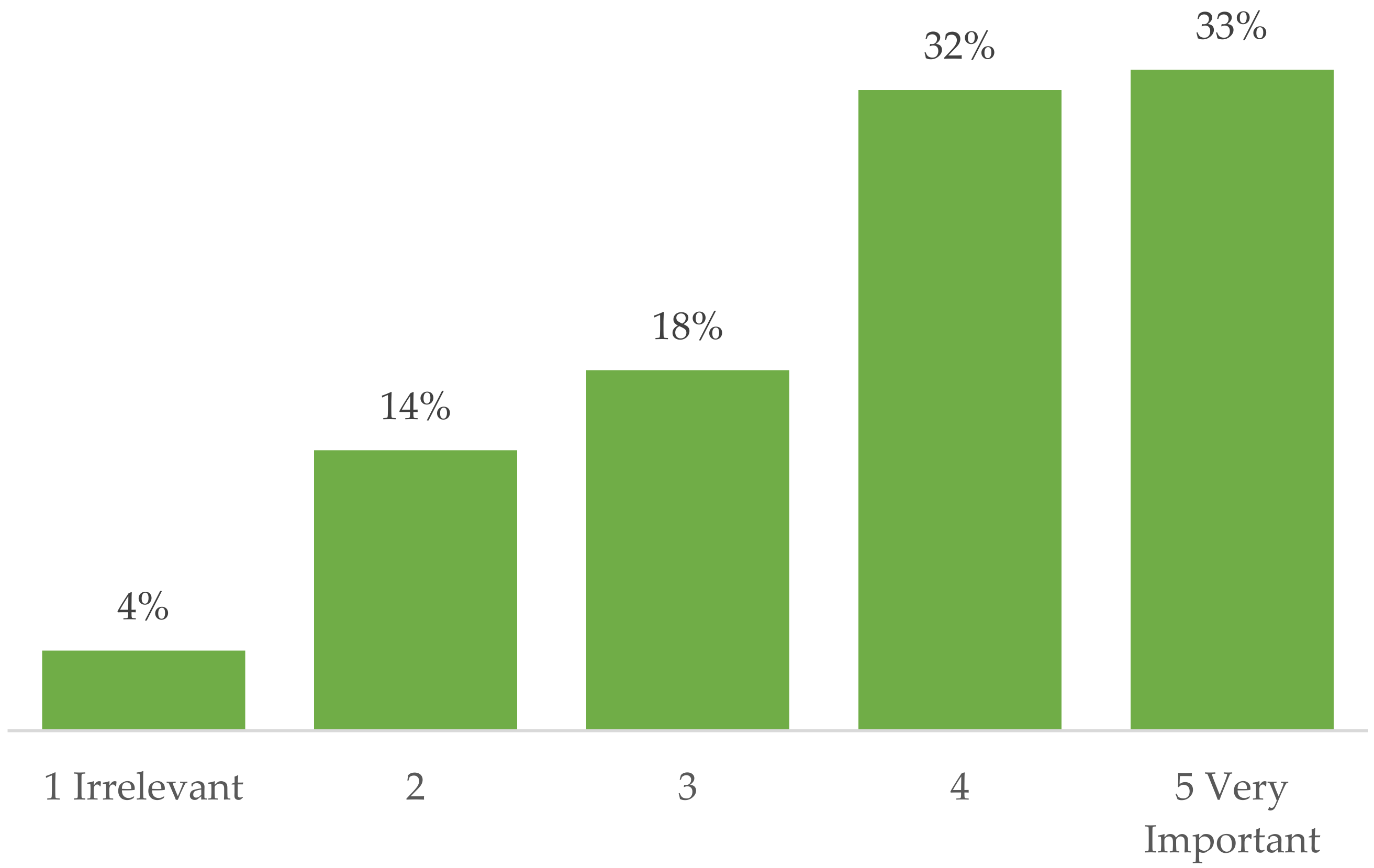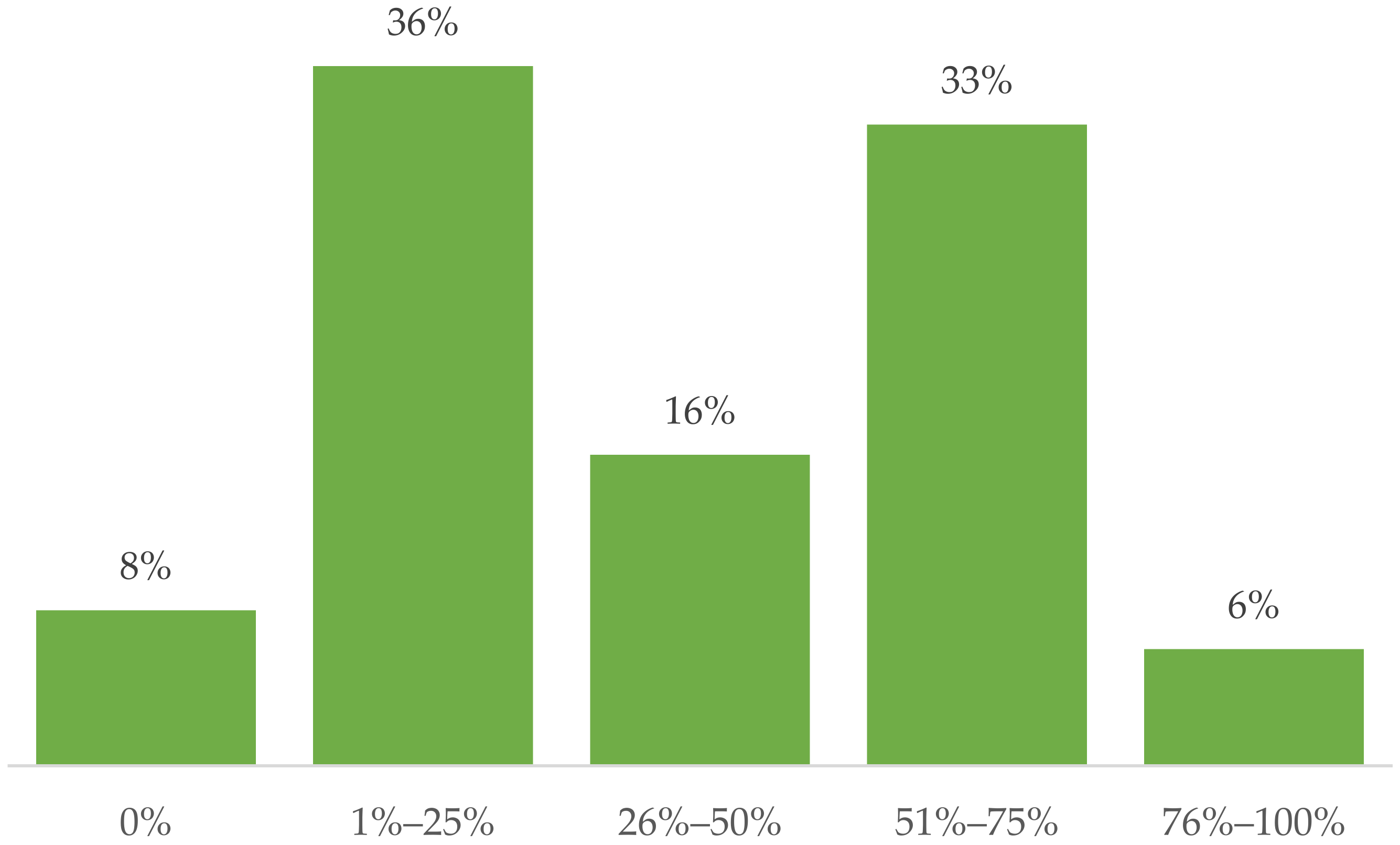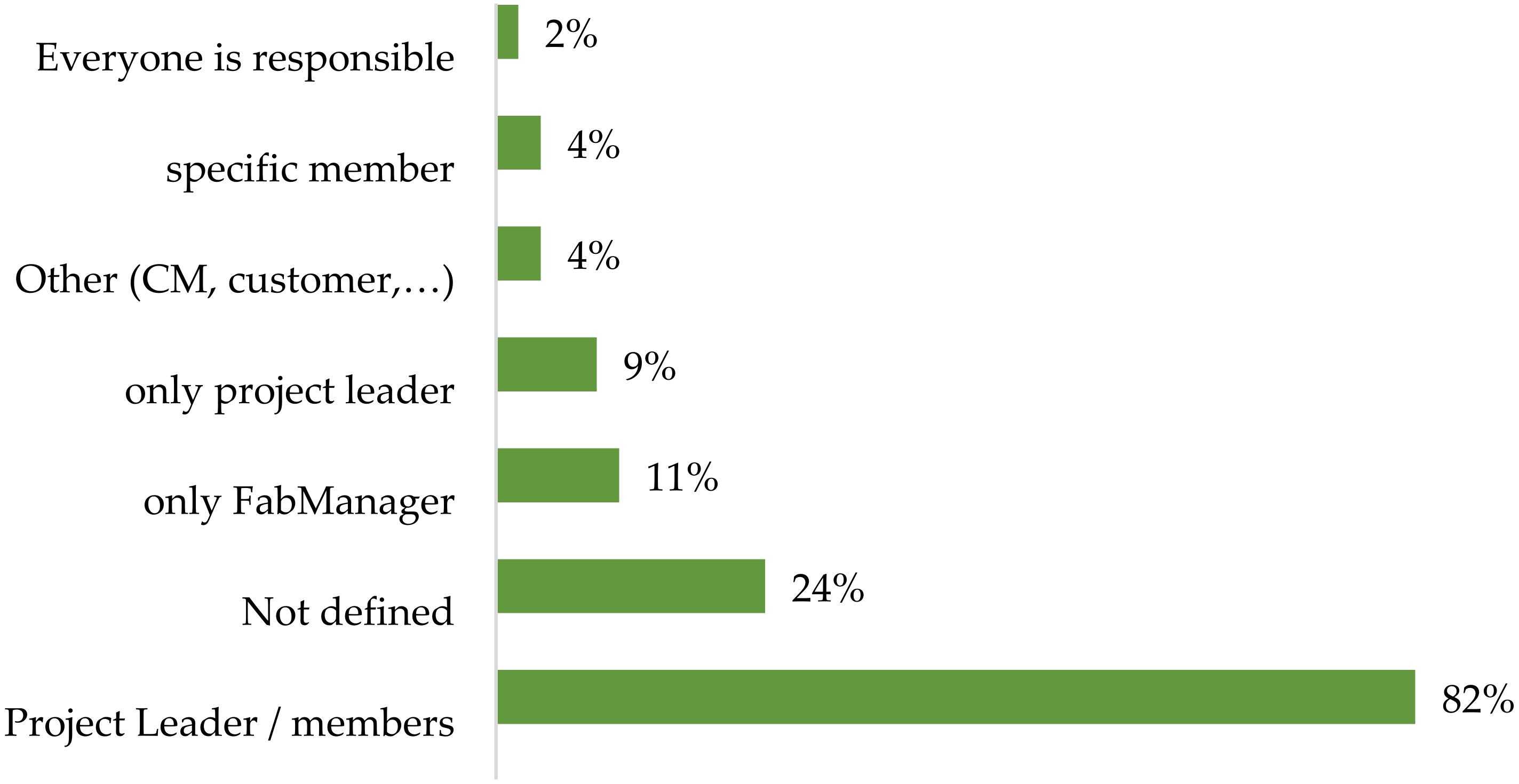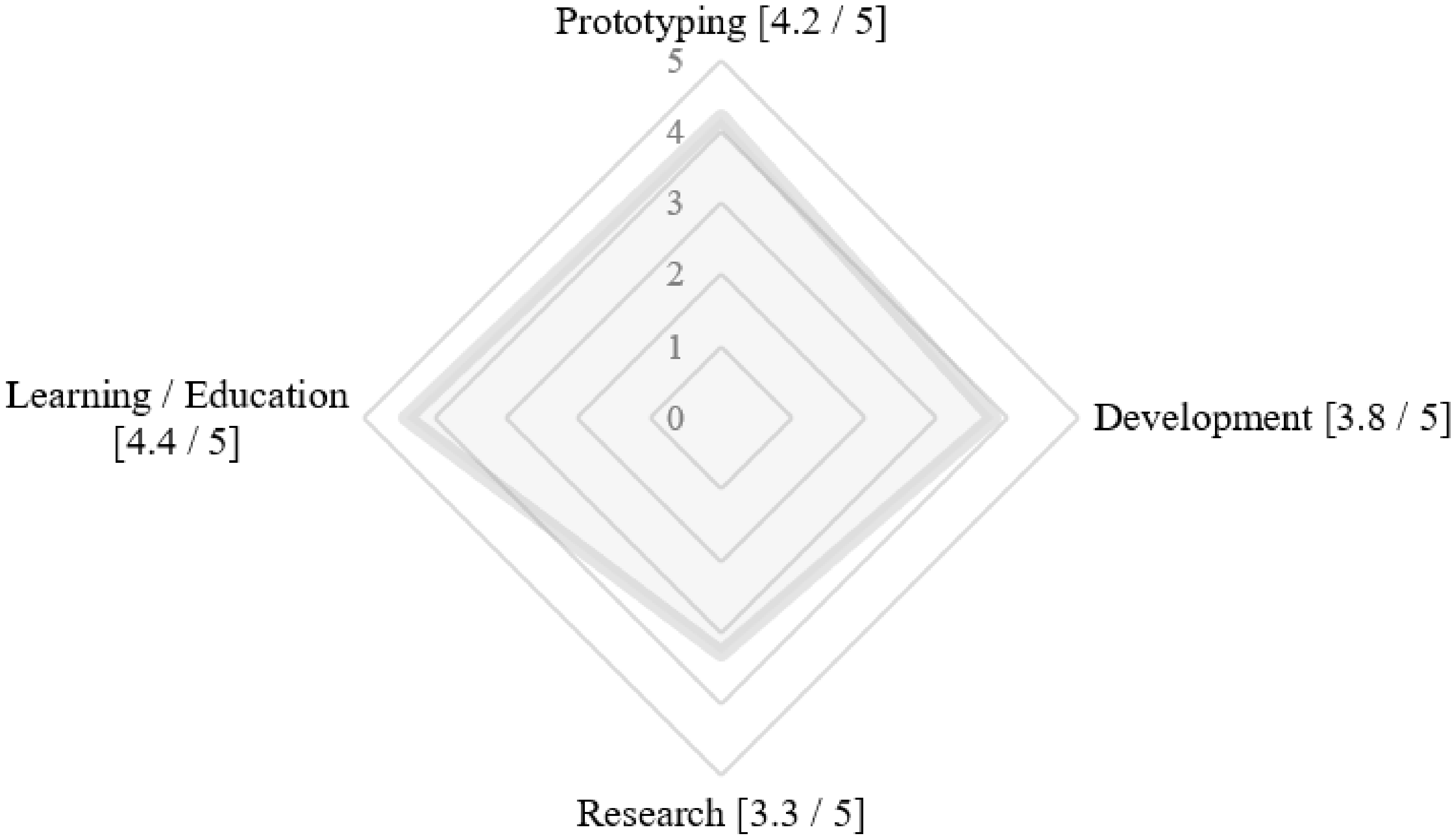1. Introduction
In the last decade, the processes of design, production and manufacturing have changed with the incursion of new technologies and strengthening concepts such as digital manufacturing, open innovation and Industry 4.0. This change has brought a new industrial revolution, where the popularization of knowledge and the productive elements and even the relationship between the user and manufacturing have changed. This change is also cultural and social since the user can achieve greater ease of access to information and the necessary technology and is no longer a mere consumer of products and services without the capacity to make actual decisions about them or the knowledge or technology to alter the industrial process or operation. Consumers can go on to become “prosumers”, a term coined in the early 1990s by Alvin Toffler in his book
The Third Wave [
1]—becoming producers and consumers of products without, in some cases, these being marketed or participating in the economy. This new democratization of industrial processes has been fueled by a proliferation of spaces and environments where users can acquire complex knowledge about digital technologies and modern manufacturing through social learning and the development of technologically advanced projects. The strong social interaction that occurs in these environments is conducive to learning and acquiring complex skills to carry out projects, in many cases solving the knowledge barrier and popularizing these digital manufacturing processes by providing a new tool for economic development and equal opportunities to achieve, finally, technological empowerment.
Within maker environments, the novelty of the movement and the significant expansion of FabLabs have aroused considerable interest in this type of collaborative initiative. Led by some standard features, including open technological knowledge and access to advanced technology and its strong international network structure, the FabLab is shown as a strong actor, with the ability to alter its environmental influence. Its effect depends on the properties of the laboratory, however, including the characteristics of the users who participate in it, and the attributes of FabLab that are included. Despite its strong social relevance, there is little information about the general properties of such environments in the literature.
Fabrication laboratories (FabLabs) are an integral part of “communities and spaces with more or less open to the public levels, with objectives and targets agreed by its members in which, through learning processes, production, prototyping, design, and manufacturing, both tangible and intangible assets, complex two-way exchanges of information are produced, knowledge, technology, skills and resources among users, users and society and between users and industry” that constitute the new wave of collaborative ecologies [
2,
3] into which elements such as makerspaces, hackerspaces, living-labs or co-workings also fall, highlighted by its origin and its capacity as an international organization.
A FabLab is a strong social space offering affordable and accessible manufactured tools and is sometimes conceived as an appropriate platform to begin the prototyping and development processes of any object [
4]. They emerged in the 2000s at the Massachusetts Institute of Technology (MIT) from Professor Neil Gershenfeld’s subject [
5,
6], called “How to Make (Almost) Anything”. Thanks to the creation of this first FabLab, Professor Gershenfeld’s students could realize their designs, popularizing digital manufacturing and making the subject successful.
After this initial FabLab, fabrication laboratories were globally involved in a dramatic increase from 45 laboratories in 2010—a time that coincided with the popularization of digital production elements such as the 3D printer Rep-Rap—to over 1000 in just seven years. The first FabLabs, together with the creation of the FabLab in Boston, were established in Costa Rica, Ghana, India and Norway, with a strong interest in local development, but with notable differences in their main orientations.
Each FabLab is as different as their users’ interests or projects, but they share some characteristics that differentiate them from other similar ecologies. One of the primary and most common attributes of FabLabs involves rules from the “FabLab Charter”. These rules can be summarized in several ideas [
7]: The FabLab must consider themselves a community resource and, consequently, leave some time in the week for public access. They must have a standard set of tools that give them the capacity to work and carry out projects and processes that allow projects to be shared between the different laboratories, giving them a network awareness that makes the laboratory an integral part of a larger network. They must respect the open source philosophy in their activities and projects and must consider the commercial initiatives carried out by their users as possible initiatives for incubation in a FabLab, but which must subsequently be developed as an external element.
An awareness of global integration allows FabLabs to exchange knowledge, promoting interconnections between different laboratories that make up the FabLab Network [
7] thanks to elements such as the FabAcademy program and the various gurus therein formed. Other elements are the expansion of FabLabs, regional FabLabs networks and the involvement of the FabLab Foundation, regional and interregional FabLab meetings, creating documents and web portals of the laboratories, the development of collaborative projects between different FabLabs and, mainly, by creating a learning environment that fosters collaboration and interaction between users locally and internationally [
8]. Thus, and through one of the critical aspects of the FabLab ideology, the learning and documentation of the projects carried out are prioritized, making them replicable in any other laboratory where it is possible to use the same instruments, generating a global knowledge environment in that ideas and projects transcend regional borders thanks to new technologies, receiving the support and improvements of a worldwide community and facilitating access to knowledge and complex techniques even for users without specific training.
It is necessary to note that, despite the importance of digital skills in today’s changing world and the existence of multiple elements that bring these skills to citizens, many non-experts see difficulties in accessing this maker culture, understood as an amateur and professional movement that includes the use of digital manufacturing technology and software with traditional manufacturing methods to create or customize objects [
9]. Immersed in this maker culture and despite its popularity, FabLabs still have the problem that any advanced technology has for general users: the difficulty of use. Despite the growing popularity of this technology, users express a lack of skills and/or essential experience necessary for the design or use of the various techniques involved in digital manufacturing; there is a high level of complexity in the action and overall management required, for example, for the use of 3D design software or a favorite 3D printer that, despite interfaces and systems, have relatively simple operations. This lack of skills, many self-perceived by users, is a barrier for entry to digital manufacturing processes, the related technology and maker environments in general. This difficulty is usually solved only through actual access to the technology offered in these places or through the occasional workshops or training activities in the maker areas. The substantial impairment that requires access to this basic knowledge in digital manufacturing is overcome by working in the community, group learning and medium- and long-term project development to achieve the involvement of users in actions aimed for children and adults. In this respect, the projects in makerspaces in general, and the FabLab in particular, often act as transformations of the population in which they find themselves, working directly in their development, as a union or open to the community generation of non-expert users actively evolving learning, as demonstrated in FabLab Genk [
9].
Innovation processes are also not beyond the capability of showing makerspaces to alter and improve the social and economic community in which are established directly. As an example, programs to promote development, such as ERUDITE, for the design and construction of services that improve the digital innovation in rural and urban environments, have been used in Slovenia; creation and tuning included two FabLabs (in Ptuj and Ribnica) with the aim of stimulating innovation and entrepreneurship by improving the economic and social conditions of nearby communities. These two laboratories were involved in the community–technical aspects of digital manufacturing through training, from primary school to university levels, in long-term programs adapted to local issues. The access of citizens to entrepreneurship was enhanced by generation communities working in the laboratories, and the process of co-creation next to the open innovation processes in the public sector was strengthened, improving transparency [
10].
The participation of citizens in the programs developed in the FabLab also includes the realization of technologically advanced research projects through citizen science. In these programs, users become nodes of research in the development and use of many useful information devices, which is difficult to achieve otherwise. These programs, such as the Smart Citizen program conducted by FabLab Barcelona [
11] or the MicroMascotas program mentored by César Laboratories in Etopía (FabLab Zaragoza) [
12], include the massive participation of citizens, users and non-users of the FabLab; organizers, data collection tools and technological developments are made at very low cost, often by users themselves with open instructions. Through open calls, and thanks to the participation of various public entities, FabLabs realize incredible projects that are proposed, designed and led by citizens who, despite not having the means or the necessary knowledge, benefit from the participation of other users who perform tasks of high complexity. The Servet experimental stratosphere project, also developed in the Cesar laboratory in Etopía (FabLab Zaragoza), is a good demonstration of this [
13]. This new wave of citizen involvement helps transform the cities from passive elements that are “product in, trash out” to living elements that generate knowledge, i.e., “data in, data out”. Here, the usual waste, technology and information are included in a fundamental element of sustainability that turns cities in the next model to FabCity, where information technologies redefine the use of the towns to obtain a new productive, economic and social dimension [
11].
Socially, and despite the various programs that they develop, FabLabs embody many of the social stereotypes of the cultural environment in which they are included. Classically, despite great social advances in equality, technology has been dominated by males, in the so-called “gender gap”. Excluding natural gender equality and maintaining a strong differentiation is strengthened by social customs that make up the established roles, from the linguistic construction itself to the assumption of different cultural values. This classic “gender gap” seems also to be reflected in the distribution of users in FabLabs, where some studies show slightly higher female participation of 25% [
14], far from equal participation. It is obviously not possible to generalize from these figures due to the diversity of FabLabs as cultural spaces and the variety of orientations, themes and projects which makes it impossible to extrapolate, as rightly noted by the authors of the study mentioned. The multiplicity of FabLab types scattered throughout the world promotes differences in the gender distribution of their users; countries such as Brazil have shown a greater elimination of differences in the participation of the genders, approaching parity [
15]. Indeed, FabLabs reflect the differentiation that society sets, and despite the egalitarian mentality of these cultural environments, the existence of multiple programs for female empowerment and their inclusion in both the maker environment and in the FabLabs themselves, the ever-growing presence of women in FabLabs in technical roles and as FabLab managers and the impact on education and training programs open to egalitarian goals, laboratories are still far from achieving the equality pursued. An example of the type of program developed in the FabLab initiative is the Poderosas program in FabLab León [
16], which aims to encourage female commitment to technology and digital manufacturing, improving self-confidence through exclusive programming activities for girls. These types of programs activate the curiosity of young users, enhancing their willingness to join higher education related to science and technology, where the male presence is classically predominant.
Despite all these efforts, the most significant gender differences among participating users in a FabLab can be found in laboratories dedicated to carrying out high-tech projects because, presumably, more cultural and economic factors limit access to resources themselves. These differences are probably due to the FabLab dependence on some institutions, where the difference is palpable, including variations due to the environment (industrial, artistic, academic, etc.) or the central themes of the laboratory (architecture, electronics, art, design, etc.) due to gender differences, since they are usually not at all limitations of access or use to users of any condition [
17].
It can be argued, therefore, that FabLabs are not spaces that contribute to gender differences or discrimination, but even being influenced by their socio-economic background and cultural tradition, they constitute a hope, thanks to the widespread use of technology and the implementation of specific programs of empowerment and outstanding contributions to social equality in education, as well as their strong, open and participatory character [
17].
In addition to the development of activities of inclusion and gender equality, several FabLabs are involved in programs aimed at social inclusion, equal opportunities or improving future opportunities for young people through training and skill development in technology and digital manufacturing. Some of these programs have strong support from foundations such as the Orange Foundation in “The Solidarity Program FabLab”, an international program aimed at young people between 12 and 25 years. This program, in which several countries in Europe, the Middle East and Africa participate, works with local authorities and a collaboration of FabManagers [
18]. As an example, in addition to supporting 19 FabLabs in France, the 2015 program selected nine international social projects for further development [
19]:
Two projects in Spain: one proposed by the “Social Technology Foundation” in Barcelona, with the aim of creating objects for the sick, and another proposed by the association “Friends in Madrid”, which seeks the inclusion of young people with Asperger’s syndrome in digital creation in the FabLab.
FabLab Trojmiastro in Poland included a project to improve access to digital technology in isolated rural settings.
In Senegal, the “Ker Thiossane” association was supported by the Orange Foundation to improve the popularization of electronics among young people.
In Cairo, the Egypt FabLab received support to create a network of mini-FabLab laboratories in five other cities.
The program also financed the creation of four new FabLabs, whose job was geared to solidarity and development as proposed by the “Old Market Alliance Hall” association in Slovakia, the “Jeunes et Sciences” association in the Tunisia project, FabLab Madagascar presented by the “SOS Village d’Enfants Madagascar” and the FabLab association in Mauritania presented by the “Mauritius Telecom Foundation”. In its 2018 edition, there were 61 projects in this program [
20].
“The Solidarity FabLab Program” Challenge #Imake4MyCity, used digital technology in 2017 to offer participants aged between 12 and 25 years without formal qualifications in digital manufacturing the opportunity to show their creative potential. The challenge, endowed with three prizes of EUR 15,000 and in which more than 60 laboratories and associations were included, focused participants’ attention on the adaptation of inclusive sport under the title “Sport for All”, while in 2018, its focus was on creating a digital solution to reinvent the city of the future (Foundation Orange, 2017) [
18].
The Orange Foundation also develops the “FabLabs Social” project in Spain within the “Solidarity FabLabs” program. The “FabLabs Social” program is a training program around digital fabrication aimed at improving the active and participatory social inclusion and employability of young people in vulnerable situations. “Breakers, Fabricate a New World” includes a program that aims to stimulate the learning of technological skills related to digital manufacturing, together with other transversal competences such as teamwork and social skills through a combination of digital innovation, the use of digital production in learning environments and social facilitation. The program is distributed in three annual calls and developed in FabLabs including FabLab Sevilla, FabLab Valencia, FabLab Leon, Tinkerers FabLab Castelldefels and Open Space MakeSpace Bilbao or Madrid, among other maker venues. This program has the support of Federation of Organizations with Projects and Flooring Assisted (FEPA) and BJ-Adaptations, as among its objectives it aims to include young people in care and guardianship who are disabled or problematic and at risk in the social sphere [
18].
FabLab Bohol [
21] is another case study, where the implementation of learning programs in the local population seeks the economic and social transformation of a rural area by improving the educational training of local entrepreneurs. These contextualized innovation programs are proposed as a solution to economic poverty and lack of industrialization in the rural regions and have a substantial impact on social and economic trends in the area.
It is clear that knowledge and training in new skills are powerful tools for economic and social development. Digital manufacturing in maker environments has a healthy positive relationship with education, as their conditions are ideal for acquiring skills in new technologies. There are numerous examples documented in the literature in which, through these learning environments, imagination, creativity and interaction between humans and technology [
22,
23,
24,
25] are improved, converting FabLabs into real laboratories for exploring and exceeding individual limits in creation, art, science and engineering [
26,
27,
28]. By providing experience and knowledge, they also achieve improved self-esteem, motivation and, of course, fun [
29]. Learning theories such as constructivism involve learning processes through direct experimental contact that are developed in the FabLab. Previous constructivist experiences include the constructionist Learning Laboratory, designed by Stager and Papert in the Maine Youth Centre with the idea of fostering an environment where knowledge is generated through the act of “doing” itself, showing the pillars of learning that take place in these collaborative environments even in challenging conditions [
30].
In recent years, the scientific literature has offered particularly important evidence of the contribution of digital manufacturing to the development of new digital skills. This application of digital production, including immersion FabLabs in educational environments, is not limited to higher education, where knowledge of the target users could be closer than expected to develop such complex skills, but includes settings such as elementary schools or libraries. Digital manufacturing, and specifically the FabLab, provides the necessary characteristics for the profound transformation that the teaching–learning process should consist of in its openness to current and future society. This incursion into the training field both occurs in the official curriculum and is unofficially protected by carrying out exercise and recreational additional activities carried in embedded laboratories and their own educational institutions, such as from laboratories supported by public/private funds and externally to the educational institution, but within collaboration. These projects are of particular interest in the education of children which increases investment in technology, science, engineering, art and math (STEAM), and it is of great importance in preparing students for future society. In this way, the elements of digital manufacturing are part of school educational projects at early ages, as in the “Arcángel: D” project developed by the Arcángel Primary School with the collaboration of the FabLab Media Lab Prado [
31] or MAkey Project with the aim of understanding the role of makerspaces in developing young children’s digital literacy and creativity [
32,
33,
34,
35].
The introduction of FabLabs in training programs also allows educational innovation. Some educational programs include innovative experiences such as using deliverable-based learning (DBL) in FabLab Faces in the Sorocaba Engineering School of São Paulo, Brazil, where students are encouraged to think about what final product they want from their job, learning in its design and constructing a path of knowledge that leads them to their ultimate goal. To strengthen social and economic development, they must be accompanied by a cultural event to be built for new generations in a way that relies on today’s adults. This cultural development implies the generalization of digital culture, but the educational objective collides head-on with the social reality in many regions. The addition of digital manufacturing activities and collaborations with FabLab educational programs contributes to the creation of a digital culture for the future and improved equal opportunities in society.
It is not only in purely educational environments that the elements of digital culture have a place. Typical librarian ideals are not so far from the collaborative ecology models close to the FabLab environment, especially if we consider factors such as free access to information, openness and freedom. This conventional approach seems to be reinforced by increasingly documented cases of FabLabs, makerspaces or hackerspaces linked to libraries. Since the opening of Fayetteville Free Library FabLab in 2010, by Lauren Britton [
7], the number of these collaborations has increased rapidly, reaching 109 three years later, as identified in John Burke’s study [
36]. In addition to this common ideology, the digital manufacturing environments share involvement in educational training with FabLabs by including experimental learning and communities of practice and improving self-efficacy through social education, even becoming elements of strong social transformation through the empowerment of the cities and individuals involved [
37].
Thus, and considering the development of culturally more distant regions from urban centers, and regions with less technological capacity, mobile laboratories are an interesting case. These laboratories represent the approach of digital technology to rural or remote environments. The first mobile FabLab was established in 2007 at the Center for Bits and Atoms (CBA) at MIT, followed by the laboratory used by the Council for Scientific and Industrial Research (CSIR) in South Africa in 2009 and MC2 STEM High School Cleveland Metropolitan School District in Ohio in 2010 [
38]. One of the cases documented is the FryskLab, a mobile laboratory in Friesland (Netherlands) housed in an old bookmobile, which in 2012 was the first mobile FabLab in Europe [
7], developed through an initiative of Bibliotheekservice Fryslan (BSF) (the Friesland Library Service). Its objective was to bring training and access to equipment and knowledge closer to regions that did not have a nearby laboratory, including training programs and the dissemination of digital manufacturing culture, even in primary and secondary education. Despite the limitation of space, it offers typical FabLab machines: 3D printers and scanners, laser and vinyl cutters, hardware such as Arduino boards and several open source portable computers. It is not the only mobile FabLab in Europe. In July 2018, there were 159 officially registered FabLabs in FabLabs.io. In France, we find the Nomad Lab, designed by ENSGSI School in 2012–2013 in order to remove the barriers to the creation and innovation of small and medium-sized enterprises in rural areas, improving their economic development [
38].
The contribution of FabLab regional development is one of the inherent cultural and nature elements applicable to their integration in the regions where they are established. Thanks to FabLab’s own characteristics, which combine the use of digital manufacturing equipment with a high technological component, and the processes of social interaction and knowledge exchange, it is possible to confirm that FabLabs are suitable environments for generating open innovation processes. These processes, along with the facilitation of access to the skills and knowledge of digital manufacturing for non-expert users, democratize manufacturing previously reserved for highly industrial environments. FabLabs constitute a real opportunity for economic development and help in preventing social exclusion and unemployment, features especially relevant in developing countries, by promoting creativity and technological entrepreneurship from knowledge, addressing concepts of the collaborative economy. This situation has been taken advantage of by different regional governments in different parts of the world where, through actions that include the participation of FabLabs as facilitators, programs are carried out aimed at improving innovation and entrepreneurship for local development, constituting a new paradigm of technological inclusion through collaborative development [
21,
39].
Do all FabLab show the same properties, however? Do they all have the same characteristics and could they be implemented in the same way in any community or region? FabLabs are diverse in their features and conditions, but according to a standard general structure based on the FabLab Charter, they should have common aspects. Using the limited literature on the subject, this paper seeks to identify the main characteristics of the digital manufacturing laboratories linked to the FabLab movement and tries to characterize their main processes and activities in order to establish a basis for further development and research.
4. Discussion
Given the results, from a technical point of view, the FabLab appears to be the ideal environment to bring the possibilities offered by current technologies to the public [
45,
46]. Cutting-edge and accessible technology (3D printers, laser cutters, CNC machines or free hardware development platforms) coexist with the tools of a traditional workshop, all at the service of FabLab users. From a social point of view, openness is evident to all users regardless of their knowledge and skills [
47].
This diversity in user profiles brings about other benefits, such as the creation of multidisciplinary working groups that can undertake major projects that individually could not be performed. Similarly, the diversity in training promotes another characteristic: knowledge transfer among peers. It is evident that the combination of technical elements with their social vocation makes these ecologies ideal environments for the development of activities that promote the reduction not only of the digital gap but also other differences related to gender, culture or role.
As mentioned, many of the projects developed in the FabLab must overcome, sometimes, user training barriers, and the technological and logistic difficulties of a region, providing solutions that equal conditions between regions far from urban environments, contributing to economic and social development by ensuring sustainability [
48]. Emphasizing the central idea, through these and other programs, FabLabs show their ability to alter and improve social and economic conditions and feed economic and technological development in societies through project implementation and user training.
From an economic point of view, even though the FabLab movement is still looking for a business model to ensure its survival, it is noted that the decision to implement a FabLab should not be based only on economic reasons, but should also consider that the central element is the community, and equipment is a mere excuse to enhance interaction between FabLab users. We can therefore say that the FabLab function as a “tiers-lieu” or “third” [
49], that is, a different space from home or workplace that fosters remote informal relationships and fast prototyping capabilities, coupled with the opening to other organizations. It allows the development of germ activities for future business projects. As stated in the FabLab Charter, its policy of sharing resources and information is not incompatible with the possibility of developing business projects that will continue outside the FabLab. A FabLab offers a friendly community to develop prototypes before going to market, which succeeds in reducing an environment of exclusion and underdevelopment.
On the other hand, dedication to training is not simply a means of economic support for a FabLab, but also a means of knowledge transfer and bridging the digital gap. Documentation is a basic tool for disseminating knowledge and increasing cohesion in the FabLab Network. Training activities and public processes of project documentation constitute a strong tool for improving the conditions of the communities in which FabLabs are established.
The FabLab movement, with its characteristics of openness and closeness to the public, is not exempt from criticism [
50]. The FabLab can be seen in many different ways: from a mere bourgeois pastime or training space technology to the catalyst for a new industrial revolution, by enhancing a revival of the arts in combination with technology and science. From this perspective, the FabLab can be considered a “counter-context” [
51]: a showcase for the confluence of different currents and theories. Its open, democratic, decentralized nature is not without risk and can attract people 3 with strong ideologies, distorting its essence of being an open and free-ideology place [
51].
Today, the main criticism facing FabLabs involves the difference between their speech and the reality they face. Laboratories cannot escape the reality in which they are immersed, which can lead to severe contradictions. These contradictions include the search for a sustainable operation that is altered by the fact that local suppliers cannot compete with offerings from Asiatic companies to induce a strong technological consumerism; generation needs users—another form of consumerism with the kit concept emergence, which as a substitute for pure DIY is empty of content and the maker movement [
52]. Another contradiction is the generation of prototypes as a mere excuse to gain skills, misrepresenting the fact of creating something useful as an end in itself, which also can be seen as mismanagement of resources [
50]. Thus, some of the critics see a distance from the FabLab environment concept of critical making, which aims to “reduce the gap between physical and conceptual creative exploration” [
53] and is divided into three phases: seeking information and relevant technologies, design and prototype development, and the last iterative process of reflection and prototype connection with the initial objective.
5. Conclusions
Currently, the cost reduction of technological components and the greater use of open tools give users unimaginable design and creation capabilities. The FabLab, born to bring digital manufacturing possibilities to the public, offers new opportunities to users and enhances the transmission of knowledge without gender or role distinctions. Its adaptability makes a FabLab the ideal environment to accommodate most situations, including lack of space or limited resources. Thus, we find FabLabs not only in industrial and educational environments, but also in public libraries and places far away from industrial or urban centers, thanks, for example, to mobile FabLabs or small local groups. The imagination and the abilities of its users, along with access to relatively simple materials such as self-replicating tools, a 3D printer or recycled materials, can lead to the creation of a FabLab anywhere in the world. The implantation of these laboratories has been beneficial for the development of communities, helping the popularization of technology among groups of users previously far from it, due to its complexity, increasing resources and population capacities and even reducing the gender gap that culturally accompanies the technical aspects.
Actually, a FabLab’s essence is the community that composes it: a community of knowledge exchange, of joint learning, of evolution and development and of innovation, in which complex interaction processes develop naturally, allowing a flow of information of incalculable value. These processes include not only user-to-user proximity-based interactions, but also distance interactions, thanks to the international network or, even, to interactions with companies and startups. Collaboration with other communities, such as makers or co-working spaces, and between FabLabs and small companies, entrepreneurs and universities is frequent.
Despite rapid expansion and the existence of common standards, the relative novelty of the FabLab movement and its particular diversity makes it difficult to identify the main characteristics of these laboratories, generating a strong information gap in the scientific literature to date. In order to understand this approach and to provide a basis for further studies, the authors developed the “FabLab Global Survey” instrument whose results are presented in this study in their physical, social and economic aspects, with special emphasis on the characteristics related to education, project documentation and entrepreneurship that define the FabLab movement.
The results confirm that, despite having similar characteristics, the wide variety of existing FabLabs makes it difficult to establish broad common characteristic patterns for classification. The number of FabLabs is higher every day, showing a significant increase year by year. It is easy to see how every month there are more laboratories registered in fablabs.io, which constitutes an informal list of existing FabLabs. There we found types from modest laboratories with little equipment to spaces with high budgets and the potential for project development. FabLabs share the use of specific basic technologies—3D printers, laser cutters and CNC machines—as general characteristics, but the wide variety of environments implies the typological diversity of their main users and the fundamental themes of the projects developed. The richness of these labs lies in this variety of environments and users, given that together with their ability to adapt, they are fundamental elements to ensure the popularization of digital skills in their communities. As has been shown, the interaction of the manufacturing laboratories and their communities is beneficial not only for their cultural and technological evolution, but also for their industrial and economic progress. Together with the rapid prototyping capacity offered by FabLabs, the empowerment of the user community fosters the development of innovative projects in which industries and small and medium-sized enterprises can be involved. In this way, the data show that a large number of FabLab participants in the “FabLab Global Survey” maintain relationships with a high innovative component with companies and organizations in their community, making clear the relevance of these environments as catalysts of economic activity and generators of wealth.
